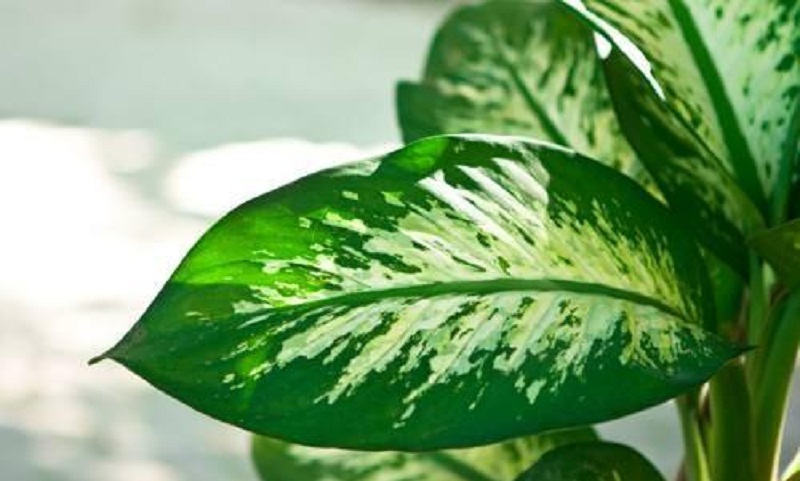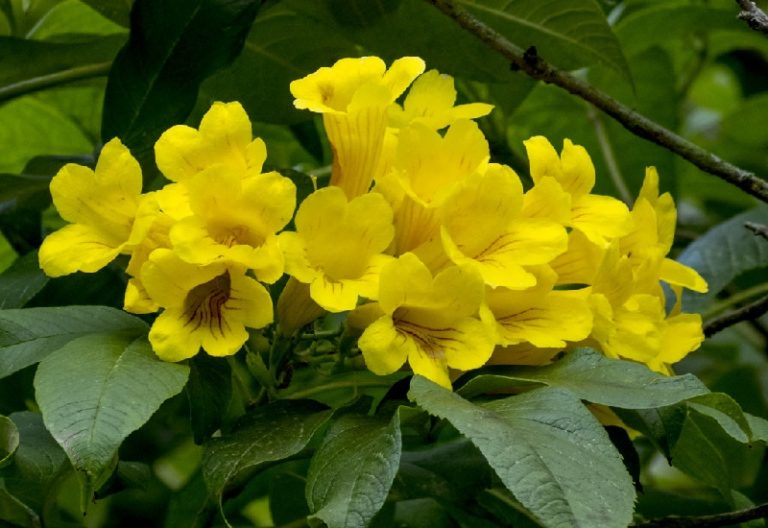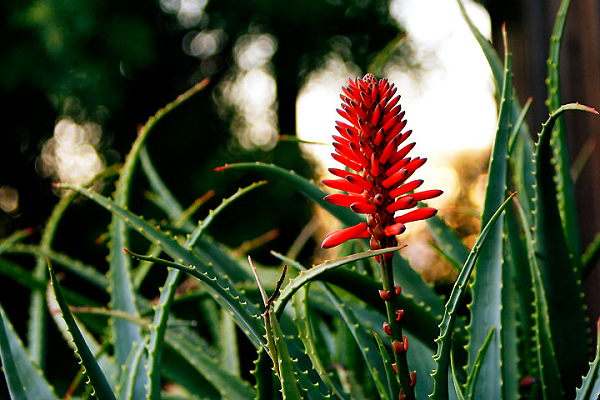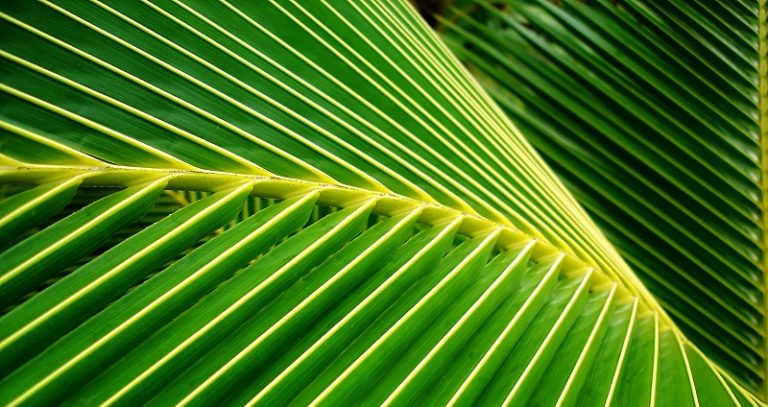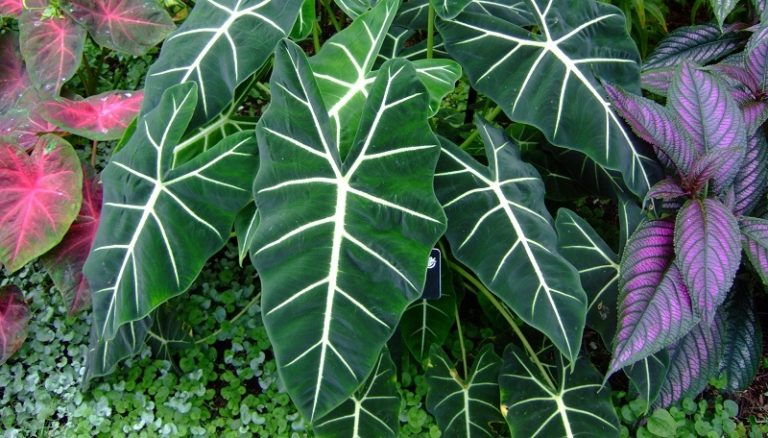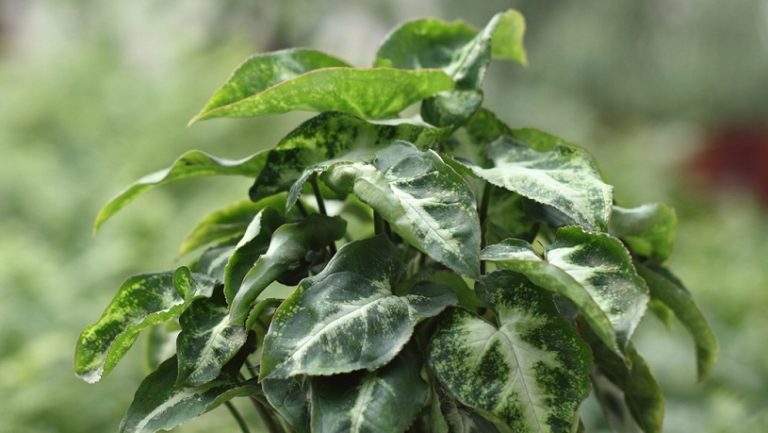Dieffenbachia: care and reproduction
Dieffenbachia (Dieffenbachia) is an evergreen plant with large, colorful leaves, belonging to the Aroid family. The stem of dieffenbachia is thick, strong and juicy, similar to a tree trunk on which large variegated leaves grow. The pattern on the leaves can be different, depending on the species: it can be stripes, dots, dots of different colors – from light green to dark yellow.
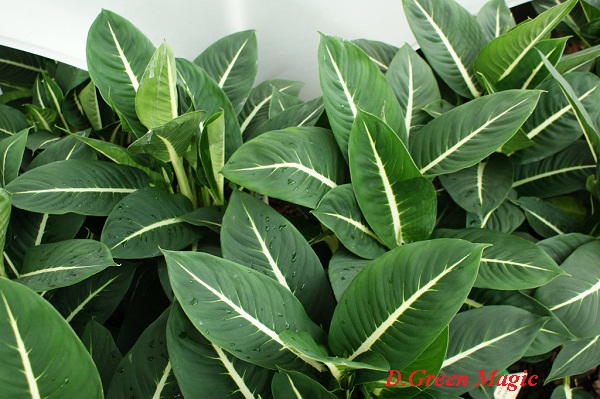
Dieffenbachia is a tall plant. In its natural environment, dieffenbachia can be found in the warm and humid rainforests of America, it can reach up to 2 m in height and even more. But even in room conditions, it can grow quite tall, so it needs strong support. Dieffenbachia grows quickly and looks spectacular, so this houseplant is very often used for landscaping living rooms, verandas, glazed balconies and restaurants.
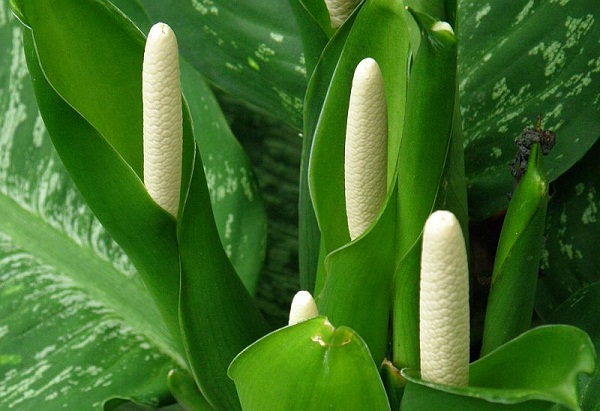
Indoors, the plant blooms quite rarely, but with artificial pollination it can even bear fruit. When the dieffenbachia flower begins to wither, it must be cut off, since at this time seeds are formed and this process takes a lot of strength from the plant.
To date, there are more than 30 species of dieffenbachia and only a few of them are most often found in our flower shops: Dieffenbachia Tropic Snow, Dieffenbachia White Flame, Dieffenbachia Reflector, Dieffenbachia Green Magic, Dieffenbachia Tropic Marianne, Dieffenbachia Vesuvius.
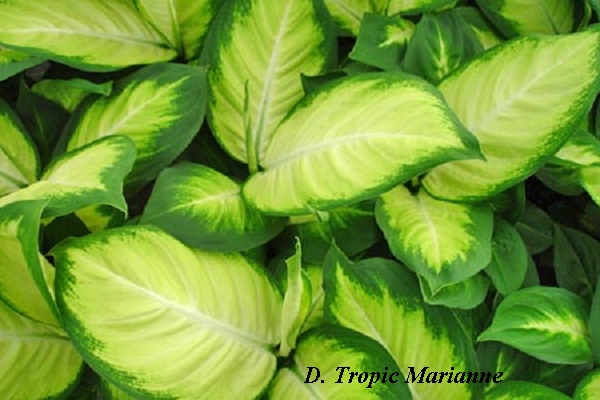
Attention! Dieffenbachia juice is poisonous. Damaged leaves and stems secrete poisonous juice. If it comes into contact with mucous membranes (eyes, mouth, nose), it can cause burns or irritation. Do not put dieffenbachia in children’s rooms, and use gloves when breeding.
Useful properties of dieffenbachia
Dieffenbachia is of great ecological importance, as it is an excellent air purifier (filter) from benzene, xylitol and other harmful substances. If you live near factories or highways, buy dieffenbachia .
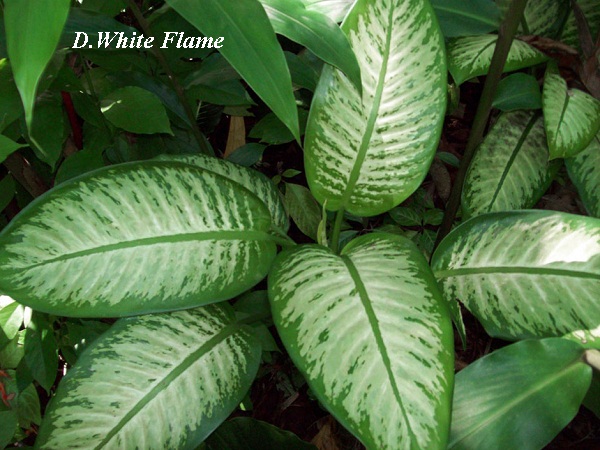
How to care for dieffenbachia
Dieffenbachia requires a special approach, but the main thing is not to overdo it. Pay attention to lighting, humidity and temperature.
Light brightness
Deffenbachia needs bright light, but it does not tolerate direct sunlight. In summer, the plant can be taken out into the yard in a shaded place. If there is little lighting, the plant will stretch out and very quickly turn into a crooked and brittle tree with a small tuft of leaves on top that will resemble a crooked palm tree.
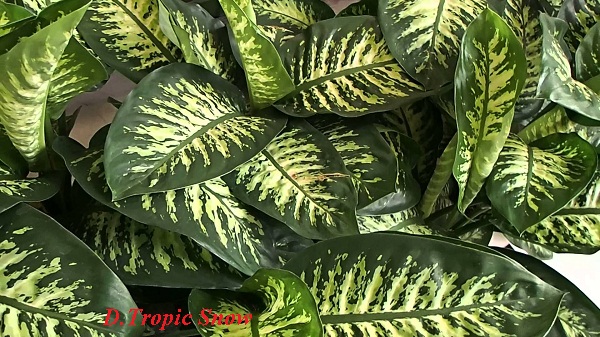
Air temperature
For dieffenbachia, a moderate temperature of +20 -+25 ° C is suitable, but do not allow the air temperature to drop to + 15 ° C, at lower temperatures the plant will freeze and die.
Watering and humidity
Dieffenbachia during the period of active growth (early spring – late summer) should be watered abundantly, with soft water at room temperature. In winter, watering should be reduced. Do not overflow in any case.
The humidity should be high enough, so it needs to be sprayed 2 times a day. How to increase air humidity? A sign of dry air is the dry edges of the leaves of dieffenbachia.
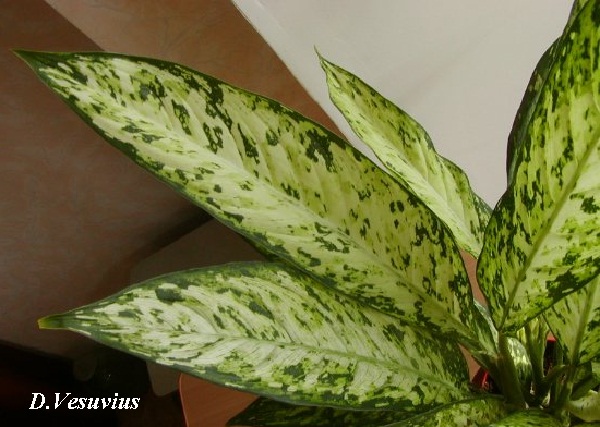
Dieffenbachia leaf care
Dieffenbachia leaves require special care, they must be wiped and sprayed, this should be done with warm and soft water. After such procedures, the leaves of dieffenbachia will become clean, and to give shine to the leaves, wipe them with non-alcoholic beer.
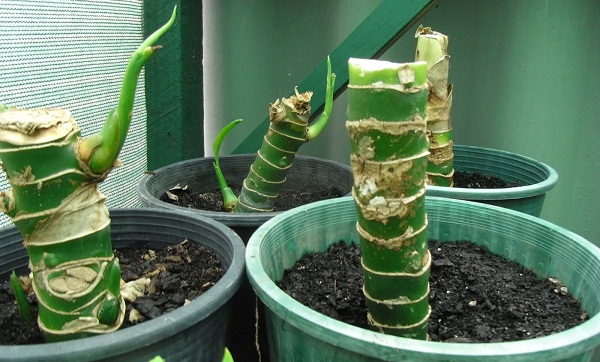
Pruning dieffenbachia
As it grows, the lower part of the stem of an adult plant becomes woody, and the lower leaves fall off and the plant loses its decorative appearance. In this case, you need to rejuvenate the plant. To do this, cut and root the top, cut the stem into cuttings and root them. You can rejuvenate the plant as follows: cut the plant completely, leaving only a short stump, after a few months new young shoots will begin to appear from it.

Fertilizer for dieffenbachia
In the spring-summer period, you need to feed dieffenbachia1 time in two weeks. Complex mineral fertilizer is best suited for variegated ornamental deciduous plants. From September to March, due to the short daylight hours, the plant spends less energy on growth, it stops, during this period you need to reduce watering and not feed.
Watch the video about indoor violet. Violet flowers are multi-colored, simple, double, wavy with a diameter of 2 to 4 cm.
Transplanting and soil for dieffenbachia
Пересадка і грунт для диффенбахії аналогічні до інших ароїдних рослин: монстери, каладіума ,сингоніума та інших. Як пересаджувати рослини?
Reproduction of dieffenbachia
Dieffenbachia is propagated by apical stem cuttings, parts of the stem, seeds.
Cuttings are rooted in water, in sand or a mixture of sand and peat (1: 1). If the stem cuttings are in water and the roots have already reached a length of 4 cm, then they can be planted in pots. And if you root in sand, then feed the cuttings with a very weak solution of mineral fertilizer (1/4 dose), this stimulates root growth. You can transplant a plant when the roots grow well, but without disturbing the earthen coma.
Dieffenbachia can also be propagated by parts of the stem. Cut them 10-20 cm long (3-4 internodes), do not plant them immediately, but dry them for 1-2 days. Be sure to sprinkle the slices with charcoal. After that, lay the cuttings horizontally and press them against the substrate so that they half peek out of the soil. Rooting in this way is very slow (from 4 weeks to 6 months). If the cuttings have not germinated, but have not rotted either, continue to water moderately (roots are already growing under the soil). After a while, you will notice that a bud has swollen on a piece of the trunk in the ground. A leaflet will appear soon. Then it is advisable to add fresh earth to the base of the shoot. When the plant is stronger, transplant it, but in no case cut off the old trunk, the young epaulette will die.
Pests and diseases
Dieffenbachia can be attacked by aphids, red spider mites, scale insects, thrips. The presence of pests may be indicated by yellowed leaves.
All diseases in dieffenbachia occur with improper care: excessive watering and hypothermia.
The leaves turn black – the roots rot from excessive watering. The plant can be saved: remove the plant from the pot, rinse the roots, cut off all rotten roots, sprinkle all sections with charcoal, plant in sterile soil.
The leaves fall off – low temperature, drafts and dry air, but the death of old leaves is not a manifestation of the disease – it is a natural process.
Brown spots on the leaves – sunburn.
The edges of the leaves turn brown – drying out of the soil, dry air.

